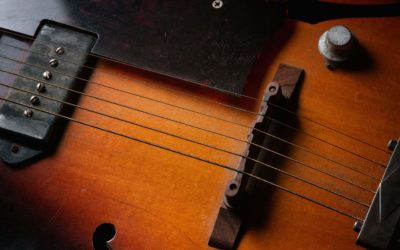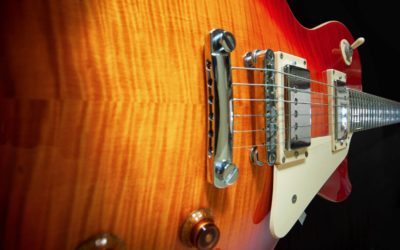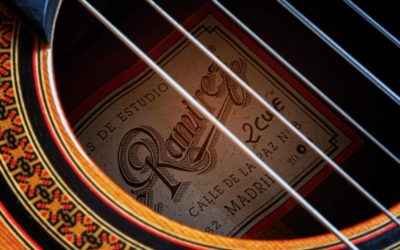Table of Contents
Contrapuntal Guitarists
In my last blog post I spoke of “What is Contrapuntal Improvisation?”, and provided a concise overview on the subject. With this post I’d like to continue on that subject, and take a look at 10 amazing Contrapuntal guitarists. They are listed in no particular order.
Technique
While contrapuntal improvisation is more common among jazz pianists, particularly Keith Jarrett, guitarists have an assortment of technical hurdles that they need to be overcome in order to achieve somewhat similar results. Having only one fretting hand is the primary hinderance. However, players such as Stanley Jordan have worked around this by using two hands and tapping the notes on the guitar’s fingerboard.
Another aspect that needs to be addressed is that all of the guitarists (other than Stanley Jordan) featured in this post are finger-style players. However, “hybrid picking” offers some interesting possibilities and it will be interesting to see how this technique evolves for Contrapuntal guitarists in the future.
Seven String, Eight String and Hybrid Guitars
One of the fascinating elements of guitarists who are interested in playing contrapuntal lines, is that many of them opt for expanding the range of the guitar. The father of modern 7 string guitar, George Van Eps, was the first to design a production model of the seven string instrument. This was an important commercial breakthrough, as previously the only way to obtain a 7 string instrument was to have one custom built.
For Van Eps and the jazz players that followed him, the extension of the lower range of the instrument allowed them to get fuller chord voicing by being able to voice the lower note on the seventh string, which was tuned either to “A” (Van Ep’s preferred tuning) or “B”. This tuning was adapted by many Contrapuntal guitarists and chord melody practitioners.
Others, such as Lenny Breau, chose to expand the range of the instrument by expanding the upper range of the instrument by having the top string tuned to “A”. This allowed for more “sparkling” piano type voices, as well as being able to play in conventional positions and having the use of the sixth string for bass notes. This higher tuning also provided added charm to his “cascading” arpeggio technique.
However, it was the emergence of Charlie Hunter where the extending of the instrument took its most radical form. Hunter teamed up with noted luthier Ralph Novax, to develop an 8 string guitar that had 5 guitar strings and 3 bass strings. This was made possible by Novax’s innovative (and trademarked) use of “Fan Frets” which allowed him to have each string set at a different length.
Not only did Hunter explore the eight and seven string guitars, but his association with Wes Lambe and Clay Conner of Hybrid Guitars yielded the fascinating “Universal 6” guitar that has 3 guitar strings and 3 bass strings, which is more approachable for regular guitarists. It should be noted that not only do these guitars have a wide musical range, but each set of strings can be routed to a different amp, thus reinforcing the illusion of a bass player and guitarist playing together at the same time.
The 10 Amazing Contrapuntal Guitarists
Chet Atkins
Perhaps the most recognizable name on this list would be that of Chet Atkins. Atkins was primarily known for his Travis influenced picking (using a thumb pick) that provided a solid rhythmic foundation for his melodic arrangements. He was also one of the early ambassadors of classical guitar, thus promoting the repitoire to an audience who would otherwise not have been exposed to it.
Although the rhythmic elements of his playing are well noted, his ability to play two lines at once is noteworthy. I remember being exposed to “Yankee Doodle Dixie” written out in an early issue of Guitar Player magazine and after working it out on the guitar I became fascinated with the concept of contrapuntal playing.
George Van Eps
I first became familiar with George Van Eps when I walked into a music store and saw the three volumes of “Harmonic Mechanisms” displayed on a shelf. I scanned through the books and immediately bought all three volumes. The material left me wondering “Who is this George Van Eps guy and what does he sound like?”
I eventually came across a CD and was finally able to hear him in action. He called his approach to the instrument “Lap Piano”, and that made sense after hearing him play. Although a great guitarist with a fine catalog of material, he is perhaps best know for his guitar books and being the inventor of the modern day seven string guitar.
Jimmy Wyble
Jimmy Wyble is perhaps one of the most underrated guitarists. Originally a country guitarist who played Western swing, he eventually moved onto playing Jazz with the likes of Benny Goodman, and particularly, Red Norvo. It was during his Jazz phase where he developed his unique approach to two line improvisation.
The basis of his approach was that he liked to use an altered scale as the harmonic foundation, thus yielding some interesting harmonies that were unique when compared to standard diatonic harmony. His books on the subject are “must haves” and there is a wealth of information to be gleaned from them. He is a player who firmly entrenched himself in the art of contrapuntal playing.
Joe Pass
No list of contrapuntal guitarists would be complete without the inclusion of the legendary, Joe Pass. A master at both single note soloing and chord melody, Pass’s virtuosity still sets the standard for solo Jazz guitarists today. His ability to maintain a steady walking bass line while improvising bebop influenced ideas is noteworthy. Although more chordal than contrapuntal, he was certainly more than able to step out and play interesting contrapuntal ideas whenever the mood hit him.
Ted Greene
Although Ted Greene is best known for his chordal mastery and theoretical knowledge, he also was an accomplished improviser of Bach inspired counterpoint. Perhaps the greatest guitar teacher of all-time, his deep playing and understanding of chords and harmony is astonishing. Watch the following clip as he not only improvising an interesting piece, but he’s actually talking and explaining as he plays.
Howard Morgen
I was fortunate to be able to study with Fingerstyle Jazz guitarist, Howard Morgen. What impressed me most about his playing was that he was able to distill the essence of a piece and play it in a fairly “simple” manner, with each line being solid and musical.
When I saw him live with fellow guitarist, Bill Wurtzel, Howard took the supporting role behind Wurtzel’s soloing, providing a strong rhythmic and harmonic background, at the “expense” of not displaying his own formidable single string chops. Howard had at one time studied classical guitar, which apparently influenced some of his jazz arrangements. It was his seven string playing with a guitar that split the bass strings to one amp and the upper strings to another that inspired me to pursue that path of playing.
Lenny Breau
Lenny Breau is considered to be a legend within the finger style guitar community. A child prodigy, who first started to play country music (his parents were country artists) and later developed it into a jaw dropping jazz style. While other guitarist sought to expand the lower end of the guitar, Breau took the unique approach of extending the upper range of his 7 string guitar with the addition of a high “A” string. He is perhaps best known for his “cascading” harmonics.
David Russell
Classical guitarist, David Russell, might seem to be an unusual choice, but his mastery of playing multiple lines at once with great clarity is impressive. There is no player I can think of who is able to play two or three lines at once, where each line is distinct, pleasing to the ear with their tonal varieties and executed with flawless technique. And while many classical players have this ability to some degree, listening to Russell’s playing with headphones will show you how a master player handles the challenge of clearly playing multiple lines, oftentimes in highly demanding classical pieces.
Stanley Jordan
Stanley Jordan is unique amongst guitar players due to his two-hand tapping approach to the instrument. Similar to the technique used to play the instrument known as the Chapman Stick, Jordan carved out for himself a unique position in the guitar pantheon. His prodigious technique on the instrument is perhaps the purest example of contrapuntal guitar playing, as he is the only guitarist who is actually using two hands to play two distinctly different parts.
Charlie Hunter
While George Van Eps gave us the seven string electric guitar, Charlie Hunter raised the ante by introducing the eight string hybrid guitar. This unique guitar was designed by Charlie, along with luthier Ralph Novax who had trademarked the innovative Fan Fret system which allowed for the use of bass strings that had a longer scale length than the guitar strings, as well as the slanting bridge system to accommodate the concept. However, what really separates this guitar from others is that the 3 bass strings are output to one jack and amp, while the 5 guitar strings are sent to another output and amp, thus providing an exceptional spread of the instrumental parts.
The impact that Hunter and his innovative guitar has made on music and guitars cannot be underestimated, as now there are companies who build these hybrid guitars in 6, 7 and 8 string version. Perhaps best known is the company “Hybrid Guitars”. Much could be said about Charlie Hunter’s music and technique, but to sum it up, he is the current master of the contrapuntal style and his music and guitar designs will reverberate into the future, perhaps influencing a whole new generation of players to adopt his instrument and approach.
Final Words
That concludes my list of 10 Amazing Contrapuntal guitarists. I hope that you found it interesting and that perhaps you might have discovered a player or two that you were unfamiliar with. I realize that there are other players who could be considered worthy of inclusion here, but I thought that this was a good assortment of Contrapuntal guitarists that were worthy of inclusion. I’m sure that there are several players who you think should make the list. What Contrapuntal guitarists would you have included in the list? Feel free to leave your choices in the comments below!





0 Comments